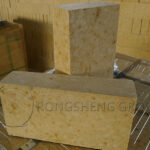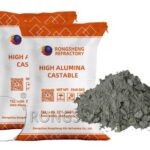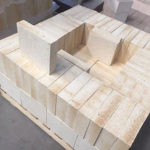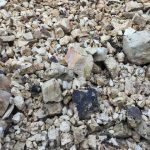Circulating fluidized bed boiler (CFB), as a major “clean combustion” device, is widely used in new or rebuilt fire (thermal) power plant projects. And it drives the continuous improvement and development of refractory materials for CFB boilers. The CFB boiler has a complex lining structure, and there are a large number of high-concentration, high-speed circulating coal particles, and flue gas in the combustion chamber. This requires CFB boiler lining refractories not only to have good construction performance but also to have high strength and good wear resistance. High-alumina wear-resistant plastics are mainly used in CFB boilers where the lining structure is complex and cannot be cast in a vertical mold, but it can be prefabricated or manually rammed and painted. Such as water wall, primary return material area, and cyclone separator. High-alumina wear-resistant plastics are generally high alumina refractory materials that are mixed with aggregates, powders, binders, and coagulants in a certain proportion, and have a certain viscosity and plasticity. The selection of alumina powder in high-alumina wear-resistant plastic has an important influence on the construction performance of the plastic and the service life of the CFB circulating fluidized bed boiler. It is embodied in the following aspects.
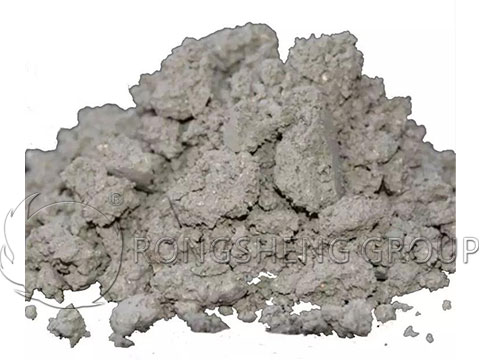
- The high-alumina wear-resistant plastic has no liquid phase at 900℃, and the bonding strength is mainly obtained by the gelation of SiO2 powder and the hydration of the bonding agent. As the particle size of the alumina powder decreases, on the one hand, the phenomenon of self-aggregation is obvious, on the other hand, the friction between the components of the material increases. Affect the filling effect, resulting in increased porosity and decreased strength.
- The smaller the particle size of the alumina powder, the higher the activity. Above 1000°C, the liquid phase appearance temperature can be reduced, the matrix sintering can be promoted, and the strength and wear resistance can be improved.
- Among high-alumina wear-resistant plastics, selecting the appropriate particle size of alumina powder can ensure good workability and physical strength, and has a good cost performance.
High Alumina Plastic Alkaline Metal Oxide Coagulant
High-alumina plastics are generally made of a certain grade of high-alumina refractory aggregates, powders, binders, and coagulants after being fully mixed in a certain proportion. Refractory material with certain viscosity and plasticity has outstanding characteristics such as good spalling resistance, can withstand drastic changes in furnace temperature and long service life. Mainly used in high-temperature fields such as boilers, heating furnaces, soaking furnaces, annealing furnaces, sintering furnaces, etc. However, as an important additive in high-alumina refractory plastics, the selection of accelerators and the study of coagulation mechanisms play an important role in the construction performance of plastics, prolonging the service life of the lining and the service life of CFB circulating fluidized bed boilers. Alkaline earth metal oxides can often be used as coagulants for high-alumina plastics, and magnesia is one of them.
Through the preparation of High-Alumina Wear-Resistant Plastics used in CFB boilers, refractory manufacturers have investigated the influence of the amount of magnesia powder added on the properties of the plastics and the mechanism of action. It is found that the magnesia ion in the magnesia has an accelerating effect on the plastic binder, and the magnesia addition amount is greater than 5%, and the accelerating time will be greatly shortened. As the amount of magnesia added increases, the normal temperature strength of the sample will gradually increase after heat drying at 110°C; the wear resistance of the plastic sample will decrease after firing at 1100°C. However, when the magnesia addition amount is 5%, the normal temperature strength and structural compactness of the fired sample can be at the highest value. The mineral phase composition of the sample is corundum, mullite, and a small amount of cordierite.



